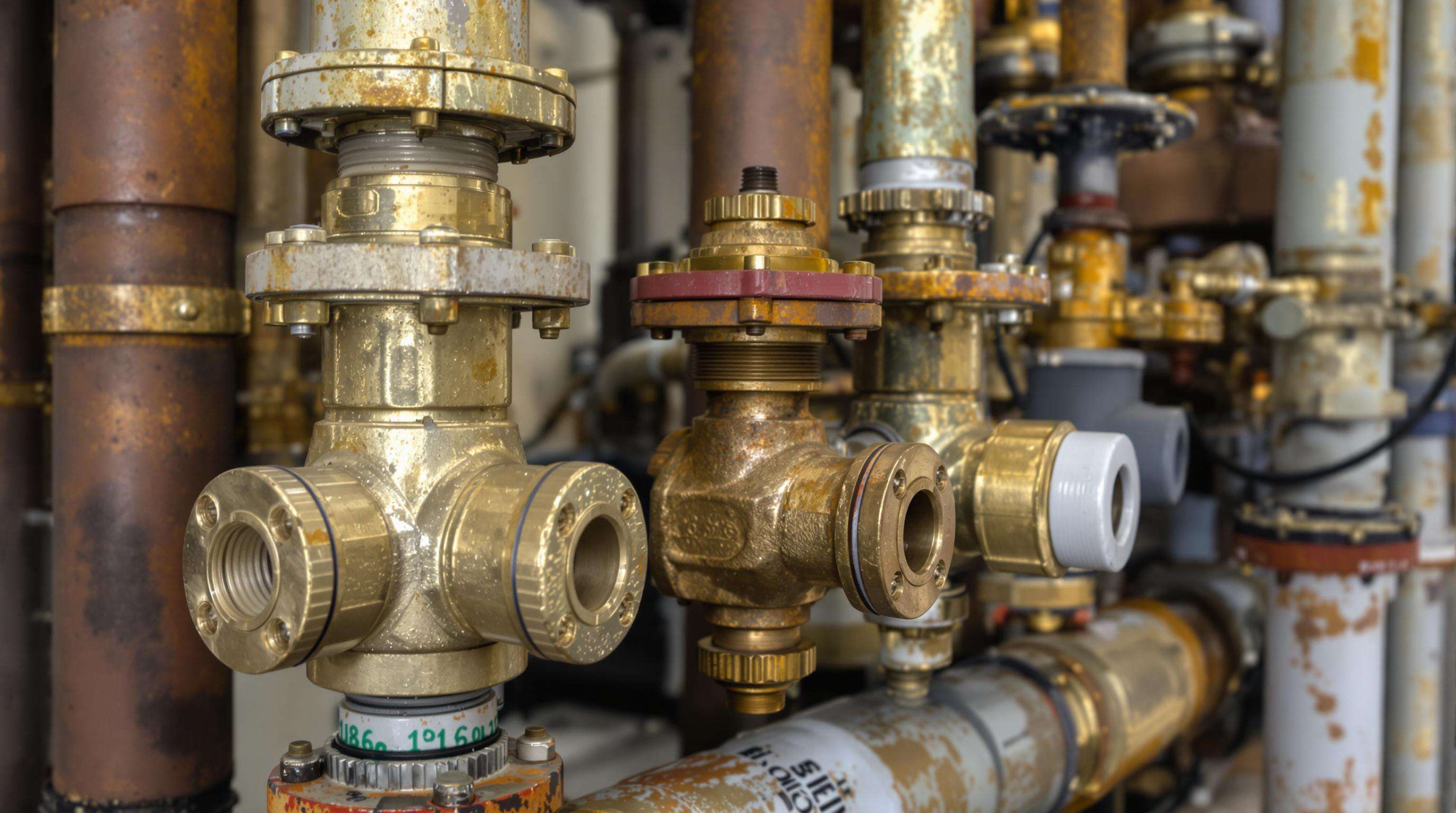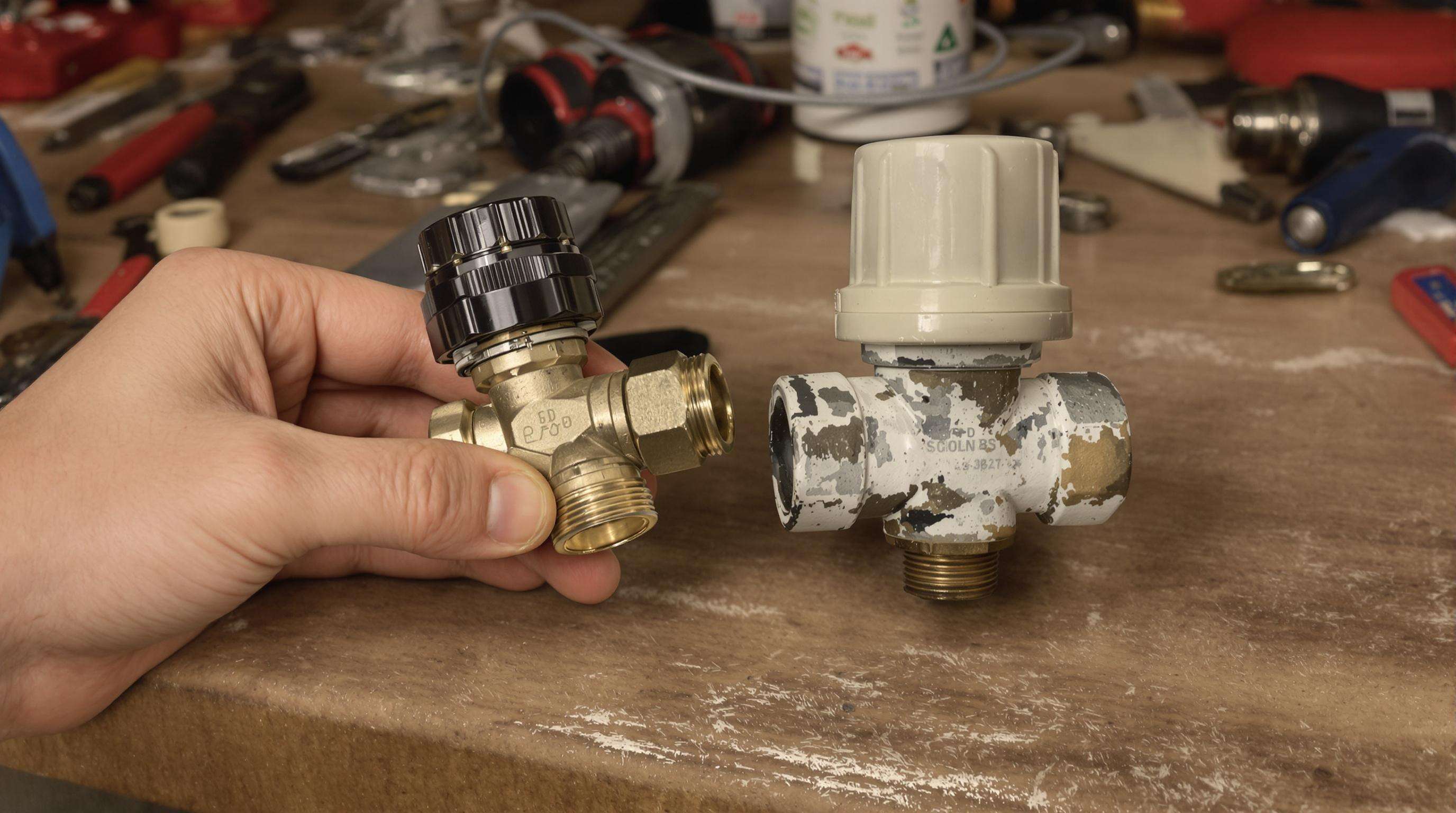
Brass valves develop a protective layer over time as they oxidize naturally, forming something like a shield against moisture and salt damage. The zinc copper mix works really well in damp conditions. Stainless steel tends to corrode much faster in these situations, with pitting rates hitting around 3.1 micrometers per year versus just 0.7 for brass when dealing with chloride rich environments according to the 2024 Materials Performance Report. Plus, brass has those helpful antimicrobial traits that stop biofilms from growing on surfaces. This makes all the difference for drinking water systems that constantly battle humidity issues.
| Material | Salt Spray Test (Hours) | pH 2-12 Stability | Galvanic Corrosion Risk |
|---|---|---|---|
| Brass | 1,200+ | Stable | Low |
| Steel | 300 | Rusts at pH < 6 | High |
| PVC | N/A | Deforms at 60°C+ | None |
Brass maintains structural integrity where PVC joints weaken from thermal cycling and steel succumbs to electrolytic corrosion. Field data shows brass valves last 2.8x longer than plastic alternatives in marine HVAC systems.
Looking at Florida's coastal infrastructure over 15 years showed something interesting about brass valves. Even with all that salt air and constantly high humidity around 85%, these brass systems kept about 92% of their original flow capacity. The plastic ones told a different story though they needed replacing every three years or so. Brass valves on the other hand? No leaks, no pressure issues whatsoever during testing. And when it comes to money spent on upkeep, brass came out way ahead too maintenance expenses were roughly 63% less compared to those composite materials throughout the whole study timeframe. That makes brass a smart choice for tough coastal environments where regular plumbing just won't cut it.

Brass valves hold up really well when faced with pressures over 150 pounds per square inch and can handle temperature swings ranging all the way from minus 20 degrees Fahrenheit right up to 400 degrees. Most PVC valves tend to warp when exposed to heat changes, while steel ones often suffer from galvanic corrosion issues over time. The reason brass works so good is because it's made from a mix of copper and zinc, giving it just the right balance between being strong enough but still flexible enough for real world applications. According to recent studies published in the Plumbing Materials Journal back in 2023, systems using brass valves experience around 42 percent fewer problems related to pressure than those relying on plastic options instead.
Looking at how long things last before needing replacement, brass valves just beat plastic systems hands down. Studies show they need replacing about 72% less often over the course of 30 years in buildings. Some research from 2022 on city water systems backs this up too. After 25 years on the job, around 89% of brass valves were still working perfectly fine. That's actually better than stainless steel valves by almost 20% when we talk about how long they stay functional. Brass doesn't rust easily and hardly needs any upkeep at all, which is why plumbers love installing them in homes as well as busy commercial buildings where constant use would wear other materials out much faster.
Brass valves definitely come with a higher price tag upfront, usually around 30 to 50 percent more than those cheap PVC options. But when looking at long term costs over about 25 years, brass actually saves money in the big picture. No need to replace them at all, repairs for leaks drop by roughly two thirds, and since brass is completely recyclable, about 95% of the material gets recovered when it's time to take them out of service. According to what the industry folks are seeing, most people who specify these valves end up making back that extra investment within somewhere between seven and twelve years just from not having to deal with so much maintenance work and preventing all that wasted water.
Brass valves work really well in all sorts of settings from home plumbing to big industrial setups and even city water systems because they have just the right mix of strength and flexibility. These valves fit nicely with different types of pipes like copper, PEX tubing, and CPVC materials, which makes things much easier when replacing old pipes that were made with different materials. The good news is that brass valves meet the latest ASHRAE 2023 requirements, so plumbers can trust them to stay completely sealed even under pretty high pressure conditions reaching as much as 600 pounds per square inch. This kind of reliability means fewer headaches down the road for anyone dealing with water systems.
Brass has good thermal conductivity which helps prevent hot spots from forming in hydronic heating systems. Tests indicate it spreads heat about 35 percent more evenly compared to those plastic alternatives we see so often these days. When looking at commercial water heaters running around 180 degrees Fahrenheit, brass valves hold up pretty well after going through thousands upon thousands of thermal cycles. That's something most plastics just can't handle before they start to warp and deform. And when it comes to pressure resistance, brass really stands out. Pressure testing reveals that brass can take nearly double what Schedule 40 PVC can manage without showing signs of wear or failure at the joints.
In 2025, Philly city workers swapped out around 12,000 old steel valves for new lead-free brass ones throughout those ancient 19th century water mains running under the streets. Maintenance crews saw their workload drop by nearly 80% over just 18 months after this switch, plus lab tests showed these brass valves held up against corrosion at an impressive rate of almost 99.6%. The engineers working on this job point to brass being easier to work with as a big reason why they could adapt custom flanges to fit those older pipe threads without too much hassle. What makes this even better is that installing these brass fittings took about 40% less time compared to what would have been needed if they had gone with stainless steel alternatives. Looking at recent data from the 2025 Advanced Fire Protection Materials Report, it turns out brass is becoming increasingly popular for upgrading essential infrastructure systems like water distribution networks.
Modern brass valves meet stringent NSF/ANSI 61 certifications, with lead-free DZR (dezincification-resistant) alloys reducing lead leaching to <1 µg/L (EPA 2023). This compliance aligns with updated Safe Drinking Water Act requirements, critical for municipal water systems where 92% of U.S. utilities now mandate lead-free brass components (AWWA 2023).
The latest Plumbing Material Sustainability Reports from 2024 show brass valves have recycling rates over 90%, which beats both plastics and stainless steel when it comes to closed loop systems. Brass also has about 60% less embodied energy compared to new materials, something that helps meet those LEED certification targets. What makes brass really stand out though is how its mechanical properties stay intact even after being recycled countless times. This means fewer valves end up in landfills. Looking at actual numbers from USGS data in 2023, commercial projects save around 23 tons of waste for every 10,000 valve installations when using brass instead of alternatives.
When it comes to holding up against heat and pressure, brass valves simply beat their plastic equivalents in terms of strength and how they handle temperature changes. Take PVC or CPVC pipes for instance these can actually stretch by around 0.18 inches just from a 10 degree Fahrenheit increase according to ASTM standards from last year. Brass doesn't have this problem though since it stays pretty much the same size even when things get hot, which means fewer leaks at pipe connections in systems carrying hot water. Another big plus is that plastic tends to break down when hit by sunlight over time something that won't happen with brass because it resists both corrosion and UV damage. That makes brass valves particularly good choice for any plumbing work done outside where pipes might be sitting in direct sun all day long.
Stainless steel weighs 35% more than brass per valve unit, increasing labor costs and installation complexity. Though stainless steel resists oxidation marginally better in chloride-rich environments, brass offers a 40—50% cost advantage (NADCA 2024) for comparable pressure ratings. Its machinability allows tighter thread tolerances, reducing sealant dependency during fitting assembly.
According to industry reports from PHCC 2023, brass valves fail at around 0.2% per year in home plumbing systems compared to nearly twice that rate for plastic valves at 1.8% and almost double again for stainless steel at 0.9%. Many plumbers we've talked to point out that brass doesn't corrode easily when connected to copper pipes, which makes these valves last much longer than alternatives. Most commercial contractors seem to favor brass for their retrofit jobs too, since field tests show they can handle municipal water systems for about 25 years before needing replacement. This kind of longevity explains why so many professionals stick with brass despite higher upfront costs.
Brass is preferred in coastal environments due to its superior corrosion resistance, especially in high-moisture and chloride-rich conditions.
Brass valves last significantly longer than PVC alternatives, with field data indicating a lifespan 2.8 times longer.
Though initially more expensive, brass valves offer long-term savings, reduced maintenance costs, and high recyclability rates, making them cost-effective over time.